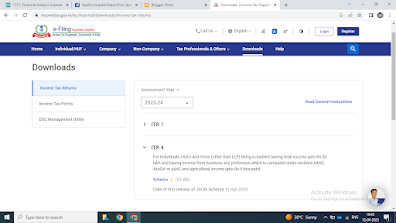Cryptocurrencies have
gained significant popularity and traction worldwide in recent years, including
in India.
In India, the
government introduced Section 115BBH in the 2022 budget, which imposes a 30%
tax (plus surcharge and cess) on profits made from crypto trading.
Additionally, a 1% Tax Deductible at Source (TDS) on crypto transactions was
implemented. In this blog, we will delve into crypto tax in India and explore
their implications for investors and traders.
Crypto
Tax in India: Key Points to Remember
1.
Tax Rate and Applicability: Section 115BBH imposes a flat 30%
tax on profits made from crypto trading, starting from April 1, 2022. The tax is applicable to
private investors, commercial traders, and anyone transferring crypto assets in
a fiscal year, subject to certain conditions.
2.
Nature of Income: Regardless of the nature of income
(investment or business), the 30% tax rate remains the same. There is no
distinction between short-term and long-term gains.
3.
Expense Deductions: No expense deductions are allowed for
crypto trading. Only the acquisition cost, which is the purchase price, can be
deducted.
4.
Loss Set-off: Crypto losses cannot be subtracted from
crypto gains. Loss from any other source of income, such as business income,
salary income, or house property income, cannot be set off against crypto
income.
5.
Carry Forward of Losses: There is no provision to carry
forward crypto losses to future years to set off against crypto income.
Implications
for Crypto Investors and Traders
1.
Tax Calculation: The tax liability on crypto income is
determined at the time of transfer or sale of the crypto asset. Unrealized
gains from holding crypto assets are not taxable.
2.
Limited Deductions: Unlike in stock and derivative trading,
the government does not allow deductions for expenses like platform fees,
broker fees, or internet charges. This reduces the flexibility for investors to
offset their taxable gains.
3.
Increased Compliance: The introduction of TDS on crypto transactions
increases compliance requirements for both buyers and exchanges. Crypto
exchanges are responsible for deducting 1% TDS on behalf of buyers and
depositing it with the government.
















